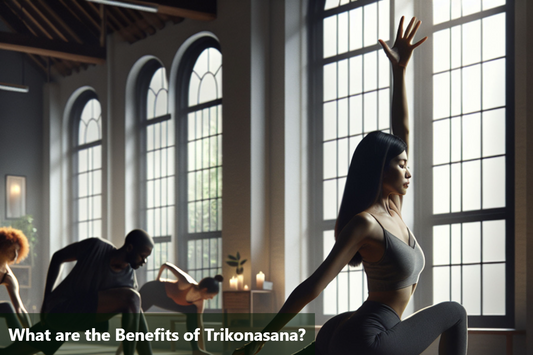Makarasana, also known as the Crocodile Pose, is a fundamental yoga asana that holds immense significance in the realm of yoga practice. This pose involves lying face down on the mat, with the legs stretched out and the palms placed under the head.
Makarasana is often employed as a resting posture between intense yoga poses, allowing the body to relax and recuperate.One of the key benefits of Makarasana is its ability to release tension in the lower back and promote spinal health. By gently stretching the spine and relieving pressure on the lumbar region, this pose aids in alleviating back pain and discomfort.
Understanding Yoga
1). Yoga encompasses of recognizing its multifaceted nature, encompassing physical postures (asanas), breathing techniques (pranayama), meditation, and philosophical principles. Originating in ancient India, yoga aims to harmonize the body, mind, and spirit, promoting holistic well-being.
2). Yoga offers numerous benefits, including improved flexibility, strength, balance, and posture. It also enhances mental clarity, reduces stress, and cultivates mindfulness.
3). Through the practice of asanas, pranayama, and meditation, individuals can develop a deeper connection to themselves and their surroundings, fostering inner peace and contentment.
4). Yoga is adaptable to various fitness levels and can be tailored to address specific health concerns, such as chronic pain, anxiety, or insomnia. With regular practice, individuals can experience profound transformations in their physical, mental, and emotional health, ultimately leading to a more balanced and fulfilling life.
Physical Health Benefits of Makarasana
-
Stress Reduction: Makarasana helps calm the mind and reduce stress by promoting deep relaxation and encouraging slow, steady breathing. It can be particularly beneficial for relieving tension in the back and shoulders.
-
Spinal Alignment: This pose gently stretches and elongates the spine, helping to improve posture and relieve compression in the vertebrae. It can be especially soothing for individuals with lower back pain or discomfort.
-
Relief from Sciatica: Makarasana can help alleviate symptoms of sciatica by gently stretching the muscles of the lower back, hips, and legs. Regular practice may help reduce pain and improve mobility in the affected area.
-
Respiratory Health: The deep breathing encouraged in Makarasana helps expand the lungs and improve respiratory function. It can be beneficial for individuals with asthma or other respiratory conditions, helping to increase lung capacity and promote relaxation.
-
Digestive Support: Makarasana gently massages the abdominal organs, stimulating digestion and promoting gastrointestinal health. It can help alleviate symptoms of indigestion, bloating, and constipation when practiced regularly.
-
Relaxation and Rejuvenation: Makarasana is a restorative pose that allows the body to relax deeply and recharge. It can help reduce fatigue, improve sleep quality, and promote overall feelings of well-being and rejuvenation.
-
Mind-Body Connection: Makarasana encourages mindfulness and awareness of the breath, helping to cultivate a deeper connection between the mind and body. It can be a valuable tool for practicing meditation and enhancing self-awareness.
Step by Step Guide to Makarasana
Step 1.
Lie on your stomach on the yoga mat.
Step 2.
Rest your forehead on the mat.
Step 3.
Bring your palms together or stack your hands to support your forehead.
Step 4.
Extend your arms slightly forward and bend your elbows, allowing them to relax outward.
Step 5.
Keep your legs extended behind you, with your toes pointing away from your body.
Step 6.
Relax your shoulders away from your ears.
Step 7.
Close your eyes and breathe deeply, focusing on the rise and fall of your belly.
Step 8.
Hold the pose for 5-10 minutes, or as comfortable and release
Contra-Indication to Makarasana
-
Recent Abdominal Surgery: Individuals who have undergone recent abdominal surgery, particularly involving the digestive organs, should avoid putting pressure on the abdomen and may find Makarasana uncomfortable or inappropriate.
-
Pregnancy: Pregnant women should practice Makarasana with caution, especially in later stages of pregnancy. It's essential to avoid putting pressure on the abdomen and to listen to the body. Modifications may be necessary, such as widening the legs to accommodate the belly or avoiding lying flat on the stomach altogether.
-
Serious Back or Neck Injury: Individuals with serious back or neck injuries, such as herniated discs, spinal fractures, or severe cervical issues, should avoid poses that involve lying on the stomach or putting pressure on the spine. Makarasana may exacerbate existing injuries or cause discomfort.
-
High Blood Pressure: While Makarasana is generally considered a calming and relaxing pose, individuals with uncontrolled high blood pressure should practice it with caution. The pressure on the abdomen and chest may affect blood flow and circulation, potentially exacerbating hypertension.
-
Breathing Difficulties: Individuals with respiratory conditions that affect breathing, such as asthma or chronic obstructive pulmonary disease (COPD), may find lying prone and deep breathing challenging in Makarasana. They should practice the pose with awareness and modify as needed to maintain comfortable breathing.
-
Acute Digestive Issues: Individuals experiencing acute digestive issues such as severe bloating, gas, or abdominal pain should avoid poses that put pressure on the abdomen, including Makarasana. It's essential to allow the body to rest and heal without exacerbating discomfort.
An Overview on Makarasana
This pose helps in relieving back pain by gently stretching and relaxing the spine. Additionally, it aids in improving posture by strengthening the back muscles and promoting alignment. Moreover, practicing Makarasana can also have a positive impact on your mental health. It is a great stress-reliever, helping to calm the mind and reduce anxiety levels.
Makarasana stimulates the flow of prana, or life force energy, promoting vitality and well-being while clearing blockages in the energetic body. Symbolizing self-realization and transcendence, Trikonasana encourages practitioners to cultivate self-awareness and insight into their true nature.By integrating this pose into your practice, you can experience a sense of tranquility and relaxation, enhancing your overall mental well-being.Incorporating Makarasana into your yoga routine not only provides physical and mental benefits but can also help you spiritually.
DiabeSmart is the first food range exclusively crafted for diabetics. Enjoy clinically tested, delicious products that let you keep your favorite food habits while managing your blood sugar levels effortlessly.
This Blog post is an initiative by DiabeSmart, to provide accurate and Nutritionist / Doctor approved information related to Diabetes. DiabeSmart is India's first Food brand designed specifically for Diabetics, that has been clinically tested on Diabetics and Pre-Diabetics to deliver 55% - 70% lower Sugar spikes. DiabeSmart is part of Lo! Foods - India's leading brand for Everyday Functional Health foods.














